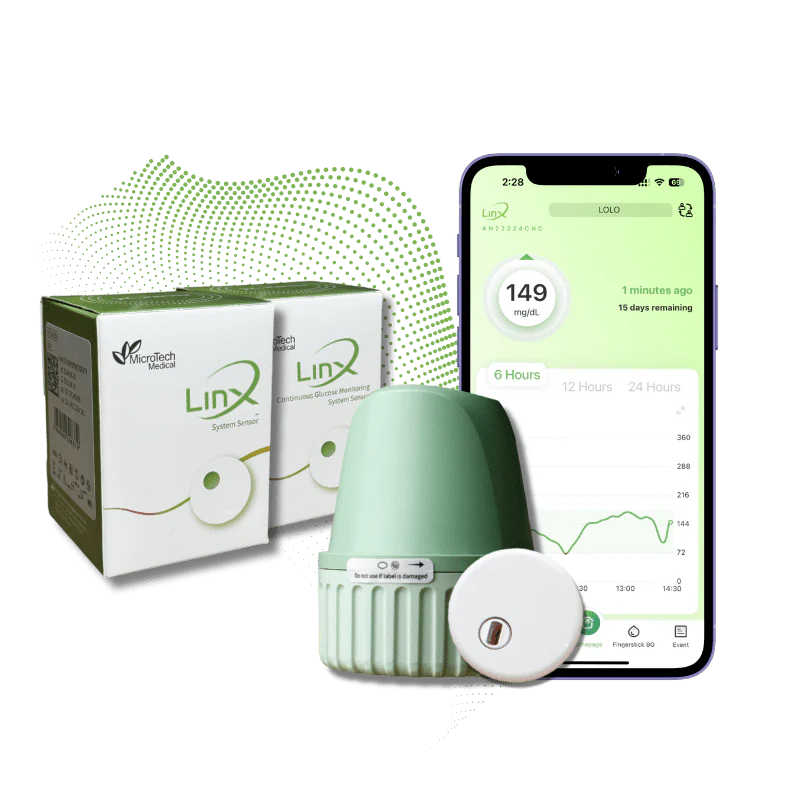Diabetes management revolves around consistently monitoring blood glucose levels, which can help you understand how well your treatment plan is working and allow you to make necessary adjustments. Whether you’re managing Type 1 or Type 2 diabetes, selecting the right blood glucose monitor is essential to get accurate readings and make informed decisions about your health. In this guide, we’ll explore some of the best blood glucose monitors currently available, their features, and how to choose the right one for your needs.
Why Monitoring Blood Glucose is Important
Blood glucose monitoring is a fundamental aspect of diabetes care. Regular testing helps individuals with diabetes stay on top of their blood sugar levels, track fluctuations, and understand how different factors—such as food, stress, exercise, or medications—impact their glucose levels. By identifying trends, you can make lifestyle or medication changes that better align with your health goals. The key to effective diabetes management lies in consistency and accuracy, which is why selecting the best blood glucose monitor is so important. With the right device, you’ll gain confidence in managing your condition and maintaining a healthier lifestyle.
Choosing the Right Blood Glucose Monitor
When selecting a blood glucose monitor, there are several important factors to consider to ensure the device aligns with your lifestyle, budget, and healthcare needs.
Accuracy is arguably the most critical factor when choosing a glucose meter. Your device needs to provide reliable results, as inaccurate readings could lead to inappropriate decisions about your treatment plan. To ensure accuracy, it’s best to select a device that’s FDA-approved or recommended by medical professionals.
The ease of use also plays a significant role. The ideal glucose meter should be simple to operate with an intuitive interface and clear display. Whether you prefer a screen with large digits or a touchscreen for a more modern feel, your monitor should be easy to navigate, especially during busy mornings or hectic routines.
Data management is another feature to look for. Most modern monitors store your results, which is helpful for tracking your progress over time. Some models allow you to upload your data to your smartphone or computer via Bluetooth, giving you a digital record of your results for sharing with your doctor. Many meters also offer graphs and trends, which can provide insights into your glucose control over the long term.
Portability is another consideration. If you’re always on the move, choose a glucose meter that is lightweight and compact. Some monitors come with small carrying cases that hold everything you need for testing on the go, which makes it easier to keep up with your routine wherever you are.
Top Blood Glucose Monitors to Consider
Several blood glucose monitors stand out in terms of their features, performance, and user satisfaction. Below are some of the top devices you can consider for consistent and accurate blood glucose monitoring.
The Accu-Chek Guide is well-regarded for its user-friendly features and reliable accuracy. It includes a Bluetooth connection that syncs with the Accu-Chek Connect app, allowing you to store and track your results effortlessly. The large, easy-to-read display ensures that you can view your results with minimal effort. This model also simplifies the process of loading test strips, making it ideal for those who prefer convenience. While it is known for its accuracy and ease of use, it does require calibration to ensure optimal performance.
Another top contender is the OneTouch Verio Flex, a sleek and compact blood glucose meter that features a color-coded range indicator. This visual tool helps you easily determine whether your blood glucose is within the target range. It also includes Bluetooth connectivity, allowing you to sync results with the OneTouch Reveal app for easy tracking. The device is designed for accuracy and convenience, but it does require a slightly larger blood sample compared to some other monitors, which could be a drawback for some users.
For users seeking an affordable yet accurate option, the Contour Next One is a highly-rated meter known for its precision and ease of use. This model features Bluetooth connectivity and works with the Contour Diabetes app to give users a full picture of their glucose levels over time. The SmartLight feature, which indicates whether your result is within or outside the target range, helps users quickly assess their readings. While the device’s display is backlit for ease of reading, it is a bit bulkier than some smaller models, which may be less convenient for users who prioritize portability.
For those who prefer continuous glucose monitoring, the Freestyle Libre 2 offers a more advanced solution. Unlike traditional meters that require regular fingersticks, the Freestyle Libre system uses a sensor that continuously tracks glucose levels for up to 14 days. The data can be read via a smartphone or dedicated reader device, allowing you to monitor trends without having to test multiple times per day. This system is particularly suitable for people who want to reduce fingerstick testing, though it requires periodic sensor replacements and comes with a higher initial cost compared to standard meters.
Finally, the TruMetrix Self-Monitoring Blood Glucose Meter is a budget-friendly option that doesn’t sacrifice quality. This device is quick, easy to use, and provides accurate readings in just a few seconds. The TruMetrix meter is compact and convenient for travel, making it ideal for those who need to test on the go. While it lacks advanced features such as Bluetooth connectivity or app integration, it remains an excellent choice for users who are looking for a reliable, no-frills glucose monitor.
How to Care for Your Blood Glucose Monitor
To ensure that your blood glucose monitor continues to perform optimally, regular maintenance is essential. Cleaning the device is simple—wipe it down with a soft, damp cloth to remove dust or any traces of glucose from previous tests. Avoid using harsh chemicals or abrasive materials that could scratch or damage the screen.
Test strips and lancets have expiration dates, and it’s important to check these regularly to avoid inaccurate readings. Be sure to store your test strips in a cool, dry place, away from moisture or direct sunlight, as these factors can affect their reliability.
Some glucose monitors may require calibration to maintain accuracy, so it’s important to follow the manufacturer’s instructions carefully. Proper storage and care will ensure that your meter provides accurate readings when you need them most.
Conclusion
Choosing the best blood glucose monitor comes down to your individual needs and preferences. Whether you prioritize accuracy, portability, or advanced features like continuous glucose monitoring, there is a device out there that will help you manage your diabetes effectively. Regular testing is an essential part of maintaining healthy blood sugar levels, and with the right monitor, you’ll be empowered to make informed decisions about your health. If you’re unsure which model to choose, consulting with your healthcare provider can provide valuable insight into which device best fits your specific needs.


